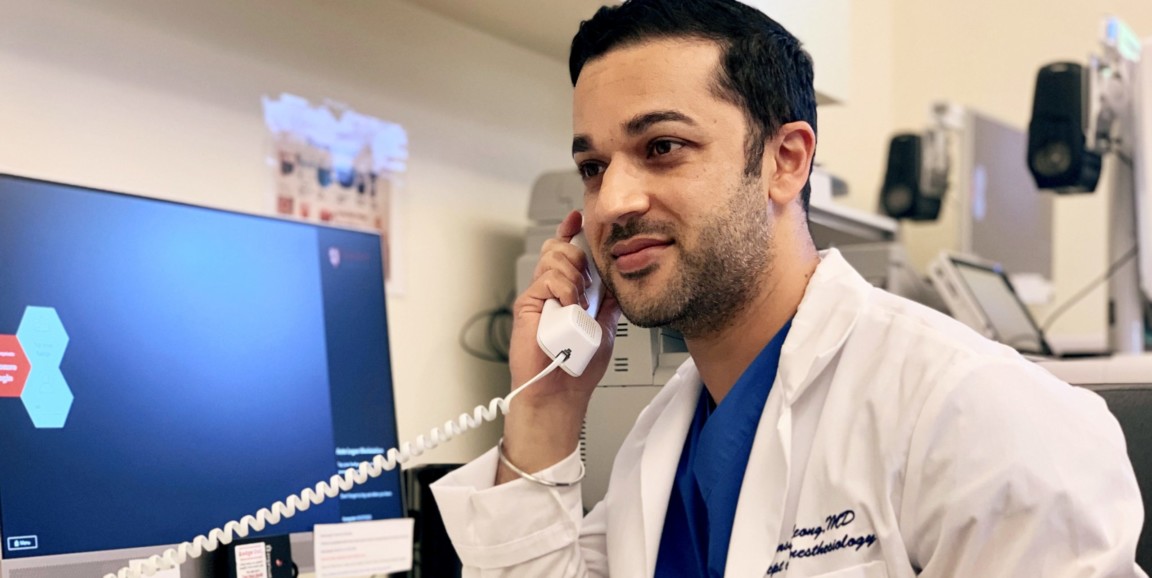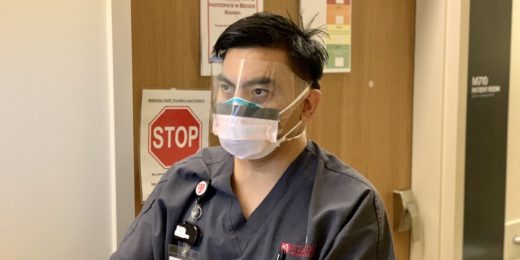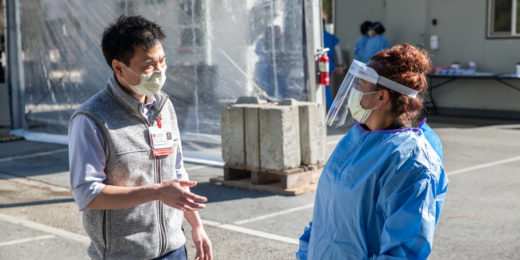Each day, after Ricky Hansra, MD, visits his patients in intensive care, he settles in for another round of check-ins, which he's grown accustomed to doing by phone. He reserves a couple of hours to call the family members of each of his 15 or so patients. They shouldn't feel rushed, he thinks. He wants them to feel as if they're at their loved one's bedside, and he's stopping in to say hello. Just like it was before COVID-19.
The first time he speaks with a family member, the medical updates can wait; first, Hansra wants to learn about the patient's life outside the hospital. What brought them joy before they got sick? What really annoyed them?
This is where he learns that one patient taught himself to play the clarinet and loved pho; another patient began each day by reading his Bible, a newspaper -- an actual paper that he can hold in his hands -- and the U.S. Constitution, so proud to have become an American citizen.
Hansra, a critical care fellow at Stanford, looks after patients with life-threatening conditions and who require intensive care. Like hospitals across the country during the pandemic, Stanford Hospital allows visitors only in limited circumstances to curb the spread of the virus. So Hansra calls every family member, every day that he's working. After nearly a year of conversations like these, he has spent a lot of time thinking about how best to reassure, empower, and advocate for patients' loved ones from a distance.
"Dr. Hansra is a wonderful example of physicians across Stanford Medicine who are also remotely interacting so compassionately with families on a daily basis," said Ann Weinacker, MD, professor of medicine and associate chief medical officer of patient care services. "Within and beyond the ICU, our physicians and staff are meeting the need on many levels to provide such loving care to patients and their families who, because of distance or visitor restrictions, can often only be seen on a flat screen."
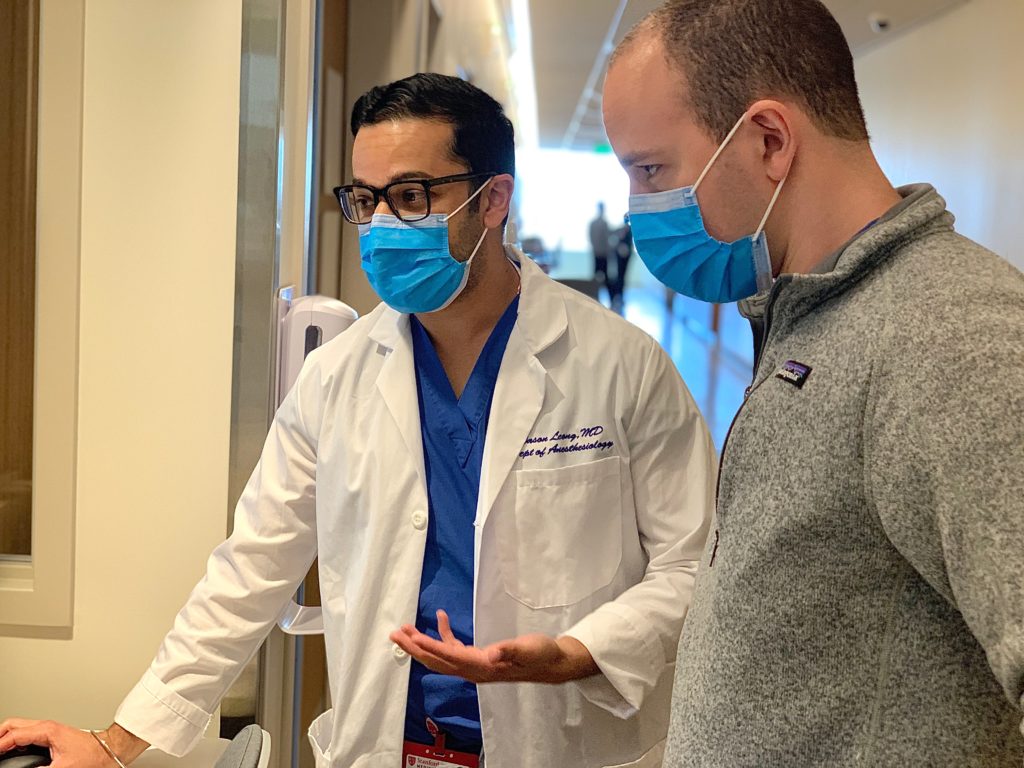
Building relationships with families
Throughout his fellowship, Hansra has worked in Stanford Medicine's many intensive care units, including the medical, surgical, cardiovascular surgery, and COVID-19 ICUs. The vast majority of Hansra's patients survive the illness, but its course of treatment can be challenging and unpredictable. Most of his patients are elderly, and many are intubated and hooked up to ventilators to help them breathe.
Over the course of his week-long service in the ICU, Hansra will form a closeness with those spouses and children despite never meeting most of them in person. He knows families need to feel comfortable enough with him on the phone that they can trust him during difficult conversations about every step in their loved one's care.
"It's really important for me to form whatever relationship I can with the family and assess how they're feeling about the whole situation, because otherwise, it can be so overwhelming that they can just shut down," he said. "The family members need time and support and you can't force them into decisions, because it becomes very hard and emotional for them."
Sometimes Hansra is able to use a detail he learns about the patient to make them more comfortable.
For the COVID-19 patient who loved pho, Hansra placed a DoorDash order so he could have his favorite meal. He arranged to have a Spanish Bible and a newspaper brought to the man who loved to read but not on a screen.
"COVID takes so long for people to recover -- there's a huge inflammatory response and it can take several days to weeks for things to calm down. You make steady incremental changes daily that to a physician sometimes don't feel like you've made a lot of big moves for someone's care," Hansra said. "Getting a patient the Bible might seem like a small gesture, but it made such a big difference to me as a provider, and to him, that it was better than the medical treatment that we administered that day."
Rethinking how to communicate
When Hansra arrived at Stanford, he drew on his experience during the first COVID-19 surge, while he was in training at the University of Massachusetts Medical Center. The hospital was prepared for the pandemic with extra personal protective equipment and higher staffing levels, he said, but there was one thing they didn't anticipate: the emotional impact of visitor restrictions.
Quickly, they had to rethink how they communicated with family members who were understandably upset that they couldn't see their loved ones. Hansra had completed his internal medicine residency and was in the middle of a cardiology fellowship.
"We had to figure out how we have difficult conversations without them in the room, when we couldn't assess their body language or show them X-rays and lab values and CT scans, and they couldn't see their loved one and tell how they were doing," Hansra said. "We had to first listen and understand their concerns."
'How frank do you want me to be?'
After he's learned about the family member's loved one, Hansra gently moves into discussing the patient's condition and care. He assesses the family member's health literacy, with questions like, "What do you know about your loved one's condition?" and "What do you understand about what's going on with Dad?"
And then: "How frank do you want me to be?"
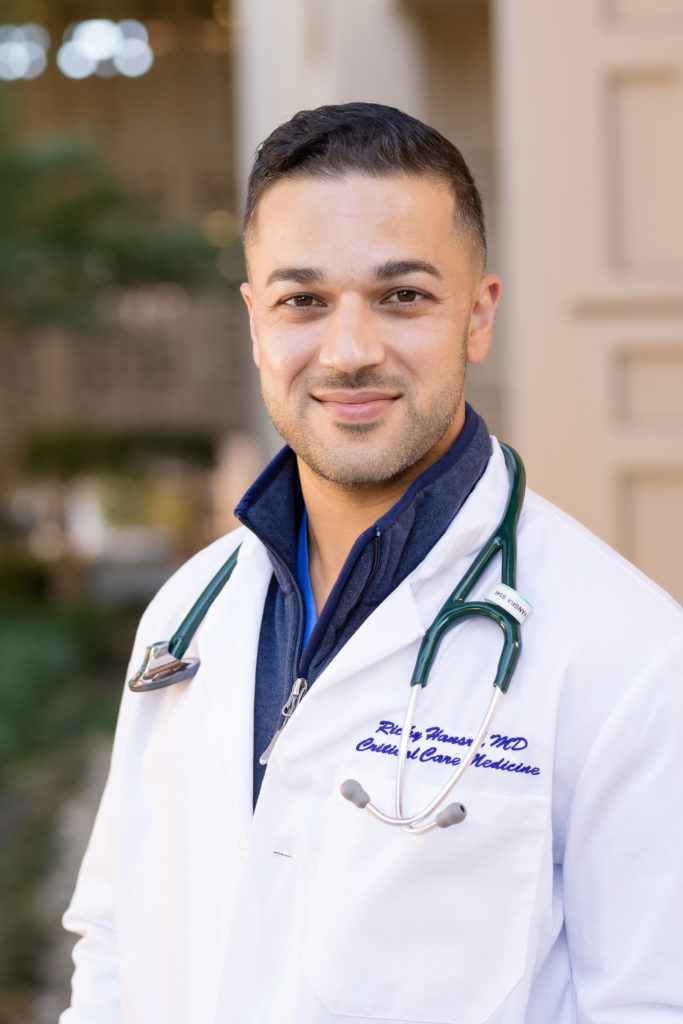
His bluntness surprises some family members. He wants to be honest with them, but they need to be ready to hear it.
"It opens up communication in a very different way. If they are working through a grieving process, if they're trying to wrap their head around it, and on day 2, I'm saying, 'It's not looking good,' and they're not ready for it, it doesn't ease their anxiety," Hansra said. "I have to remember I have the patient here, but they could be my patient at one point too -- so trying to help them and ease their anxiety is part of my job as well."
When family members were able to visit their loved ones in the hospital, Hansra could explain the different IV medication drips and show them the machine that was helping the patient's heart pump better. On the phone or even a video call, he says, it's hard for family members to grasp what's going on, especially if they've never been in a medical environment.
"I know that to completely put your trust in somebody, without being there, really takes a lot of faith," Hansra said. "It's so anxiety provoking when you're not able to see your loved one. You feel protective of them and want to be there and make sure things are OK."
Family members take note of Hansra's empathy.
In December, physician Alla Chesky, MD, was 5,000 miles away in Connecticut when she received one of Hansra's calls about a loved one who was ill.
"He makes you feel like you're very special -- he's talking to you and it's you only," Chesky said. "He hears what you say... and he remembers."
After Hansra's fellowship ends in June, he hopes to find a job where he can follow his passions for both cardiac critical care and cardio-obstetrics, working with women who have heart disease and are pregnant or want to become pregnant. He looks forward to the day he can see family members in person again, and vows not to take those moments for granted.
"We need to start building relationships with family members right away because they're part of the team as much as nursing, social work, and case managers. Families are the other part of the treatment team," Hansra said. "When people are able to visit, I'm going to keep this in mind that this can be taken away at any point, and we really never know."
The Voices of COVID series captures the stories of the many people at Stanford Medicine who have been stepping up to the challenge of the pandemic. Follow along on social media and look for new stories regularly.
Top photos by Jason Leong; Bottom photo by Rhee Bevere


